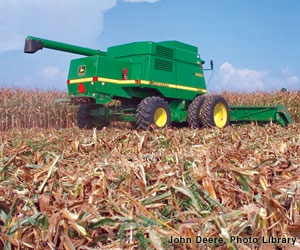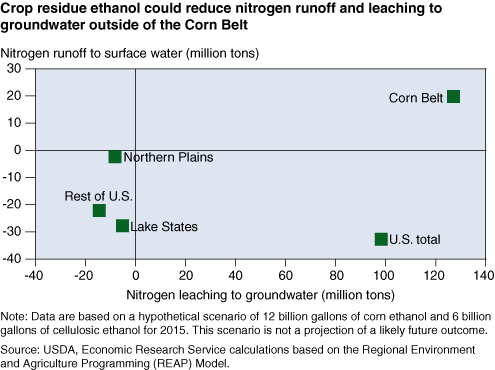Cellulosic Ethanol From Crop Residue Is No Free Lunch
Warning: Undefined array key -1 in /var/www/bioenergypro.com/public_html/bioenergy-articles/snews.php on line 2920
Warning: Undefined array key -1 in /var/www/bioenergypro.com/public_html/bioenergy-articles/snews.php on line 2921
Warning: Undefined variable $tagger in /var/www/bioenergypro.com/public_html/bioenergy-articles/snews.php on line 2924
Warning: Undefined array key "https://www.bioenergypro.com/bioenergy-articles/Logged_In" in /var/www/bioenergypro.com/public_html/bioenergy-articles/snews.php on line 2999
Warning: Undefined array key -1 in /var/www/bioenergypro.com/public_html/bioenergy-articles/snews.php on line 2929
Crop residues from agricultural field crops represent a potential source of vegetative (cellulosic) matter to be used in ethanol production. Crop residues may be particularly attractive if technologies for producing cellulosic ethanol become viable before dedicated crops, such as switchgrass, are commercially available. However, crop residues are not “free goods”—they provide soil nutrients and organic matter and help control erosion and retain moisture on cropland. Thus, the costs of shifting from production of corn-based ethanol to production of cellulosic ethanol from crop residues may offset the benefits.
 The Federal renewable fuel standards (RFS) call for annual U.S. production of 15 billion gallons of corn-based ethanol and 3 billion gallons of cellulosic ethanol in 2015. ERS estimated the land-use and resource effects if the U.S. produced 12 billion gallons of corn-based ethanol and 6 billion gallons of cellulosic ethanol from crop residue rather than the RFS target amounts. This scenario is not a projection, but serves to illustrate the tradeoffs between corn ethanol and cellulosic ethanol that may be faced as economically viable cellulosic technologies emerge. Under this scenario, total U.S. crop acreage would decline as cellulosic ethanol production displaces corn-based ethanol production. However, the aggregate environmental benefits of the shift may be smaller than expected because additional fertilizer would be applied to cropland to replace the nutrients removed with the harvested residue. The environmental effects of changes in planted acreage and crop mix would vary by region.
The Federal renewable fuel standards (RFS) call for annual U.S. production of 15 billion gallons of corn-based ethanol and 3 billion gallons of cellulosic ethanol in 2015. ERS estimated the land-use and resource effects if the U.S. produced 12 billion gallons of corn-based ethanol and 6 billion gallons of cellulosic ethanol from crop residue rather than the RFS target amounts. This scenario is not a projection, but serves to illustrate the tradeoffs between corn ethanol and cellulosic ethanol that may be faced as economically viable cellulosic technologies emerge. Under this scenario, total U.S. crop acreage would decline as cellulosic ethanol production displaces corn-based ethanol production. However, the aggregate environmental benefits of the shift may be smaller than expected because additional fertilizer would be applied to cropland to replace the nutrients removed with the harvested residue. The environmental effects of changes in planted acreage and crop mix would vary by region.
With cellulosic production displacing 3 billion gallons of corn-based ethanol, nitrogen runoff to surface water would be reduced, while nitrogen leaching to groundwater would increase. Total nitrogen use would decrease in most regions, although a large increase would be expected in the Corn Belt due to the additional fertilizer needed to offset residue harvest and the small reduction in corn acres planted relative to that of the rest of the country.
The study’s findings suggest, however, that crop residue harvest accompanied by changes in rotation and tillage management regimes could contribute to a net reduction in soil erosion. If cellulosic production displaces corn ethanol, acres planted to continuous corn would likely decline, particularly in the Corn Belt, while the use of no-till systems would expand. Wider adoption of no-till would be driven by the economic value of crop residues, as more can be harvested from no-till systems, which also reduce soil erosion.

by Scott Malcolm and Marcel Aillery - USDA
This article hasn't been commented yet.


Write a comment
* = required field